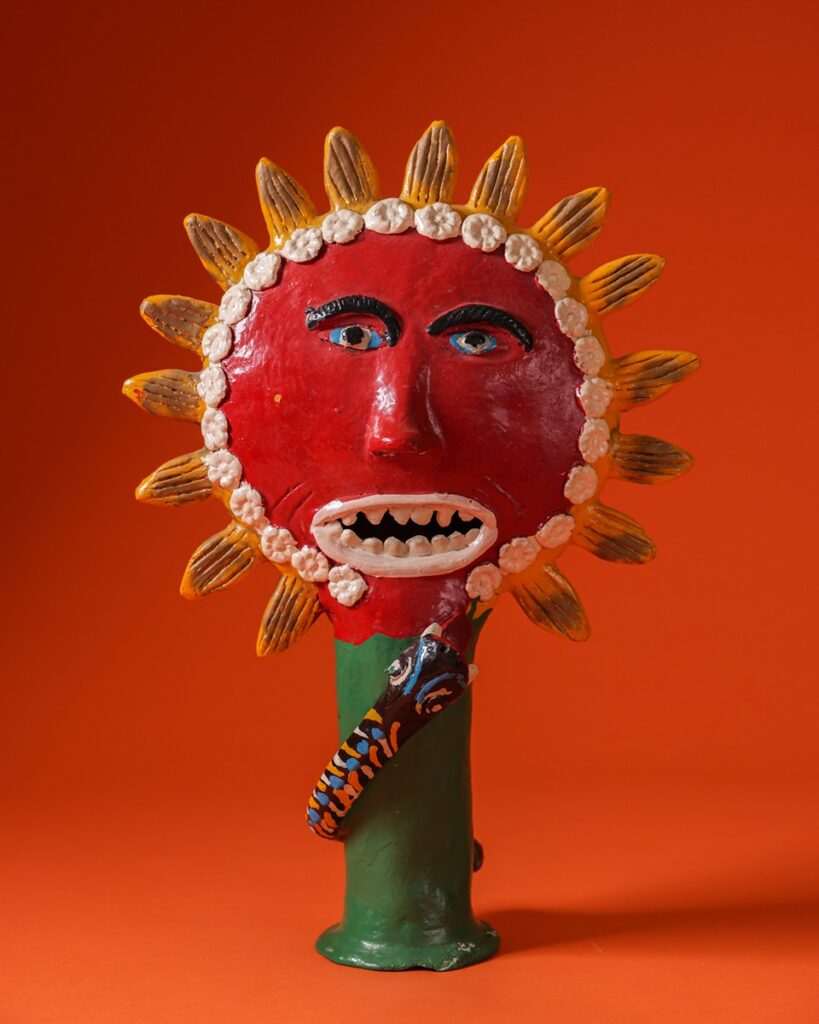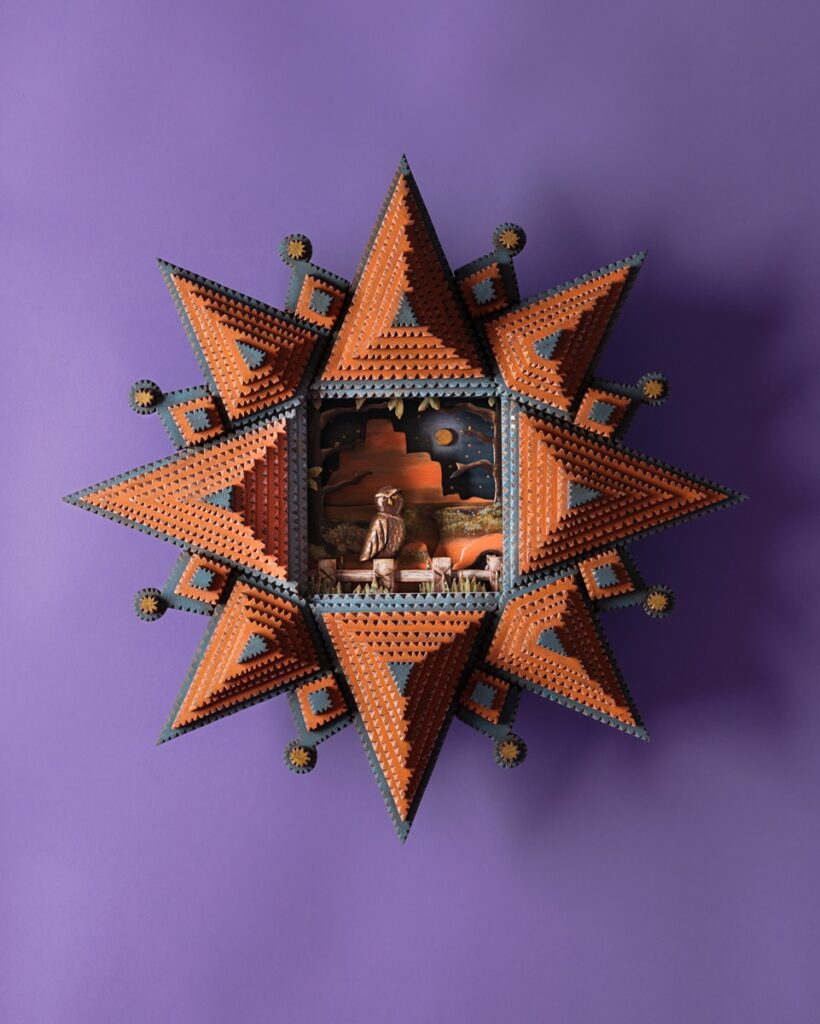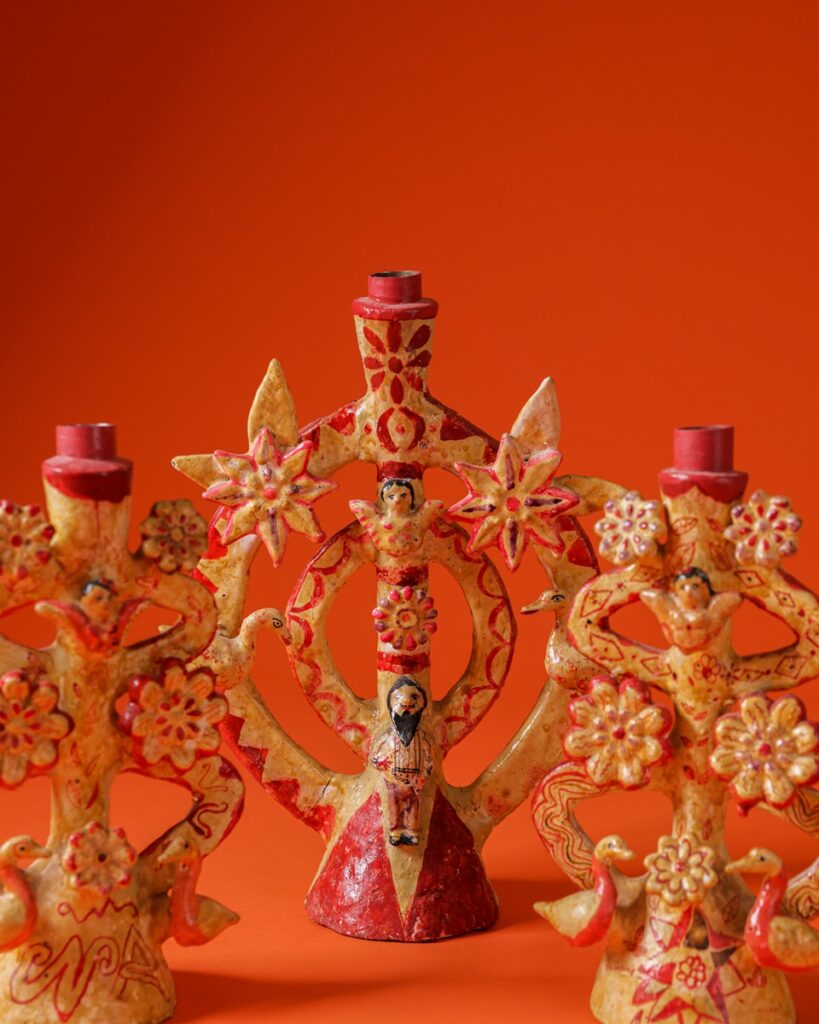With over 160,000 objects in its collection, the Museum of International Folk Art has treasures in the vault that do not often see the light of the sun, or the moon, or the stars. To share a few of its hidden gems, Director of Collections Kate Macuen dug into deep storage with TABLE’s Editor in Chief Keith Recker and Contributing Editor Tira Howard. These images of sun, moon, and stars delighted us, and we also hope you will find them as life-affirming as we did.
Exploring Dreamy Art at the Museum of International Folk Art

The Life-Givers
Traditional depictions of the sun from Michoacán, Mexico often refer to vitality and sustenance. Its light and warmth, after all, are essential elements in the cycle of plant and animal life that sustains us humans. Its fierce power is also purifying: it wards off negative forces, paving the way for good things to grow. So why did the unknown maker of this ceramic sculpture depict a snake climbing up toward the sun? Looking away from Judeo-Christian associations and into pre-Colonial mythology, snakes have a link to rain as well as fertility. The pairing of sun and snake represents a fortuitous union of divine forces, and are a wonderful reminder of the profuse plenty of Nature in summer.

By the Light of the Moon
Angie Dow is a contemporary artist who works in the tramp art style. This art movement comes from the late 19th and early 20th centuries. Its main characteristics are concentric layerings of notched wooden pieces. These usually come from reclaimed and re-used materials. Dow has helped establish tramp art as a living tradition in our time. She paints her works, a rarity in the field of tramp art: most tramp art pieces are left unpainted. This piece was commissioned for the Museum of International Folk Art and shown in the exhibition No Idle Hands, in 2017-2018. While she often embraces nautical themes familiar to her home state of Maine, this piece conveys the dreamy qualities of a moonlit night in New Mexico.

Celestial Glow of the Stars
This ceramic candlestick, shown here with partners, radiates with a starry light. One of quite a number of candelabras from Izúcar de Matamoros, Puebla, Mexico, in the collection, many of them collected and donated by renowned American designer Alexander Girard, it finds exuberance in a color palette limited to the warm side of the spectrum. Tree of Life sculptures are also said to have originated in Izúcar de Matamoros. The delightful surface decorations of this object recall that tradition. Its summery colors and the delicious interplay between floral and stellar shapes drew us in like a magnet.
Our enthusiasm for it was so replete that we were surprised not to be patted down by security on our way out. Of course, it remains safely in the vault under the stewardship of MOIFA’s curators whose crucial role includes the physical care of the objects in the museum, but also the development of scholarship around their creation and their meaning.
Story by Keith Recker
Photography by Tira Howard
Special thanks to Kate Macuen, Director of Collections, Museum of International Folk Art
Subscribe to TABLE Magazine‘s print edition.
